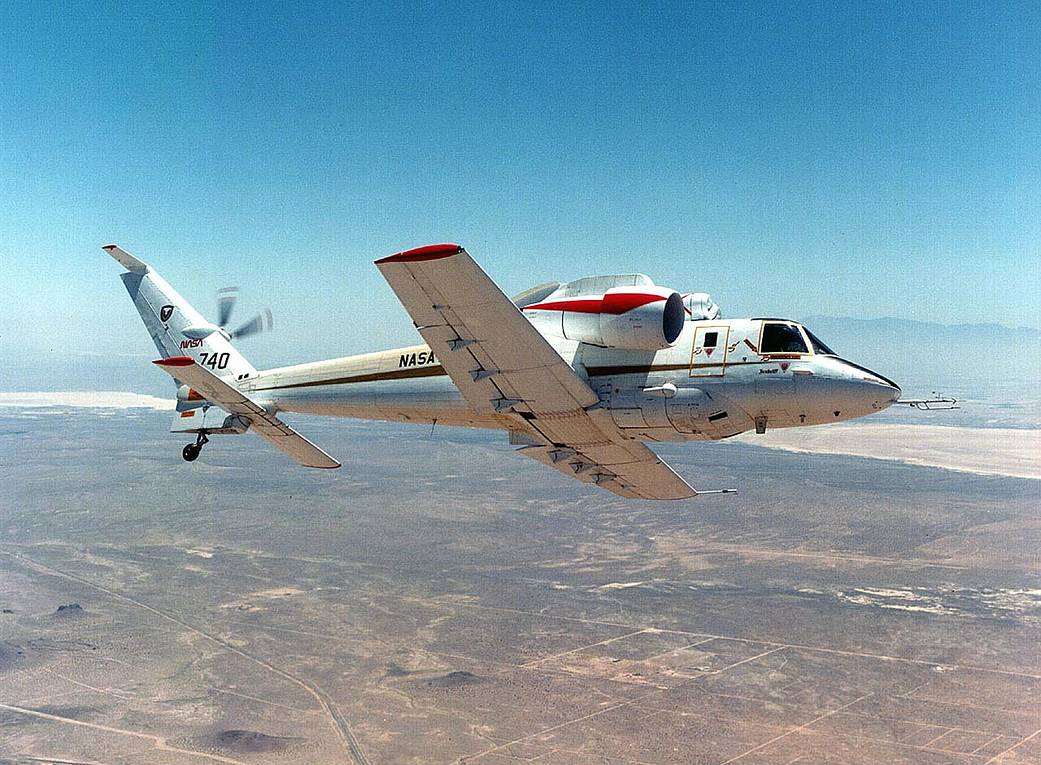
ECN-30043
A Rotor Systems Research Aircraft (RSRA) is seen here on a flight test at the Dryden Flight Research Center, Edwards, Calif., in spring of 1984. The tests at Dryden were to familiarize pilots and researchers with ground-handling and takeoff flight characteristics, as well as to acquire in-flight data in the aircraft configuration, with the main rotor removed.
The RSRA was a unique pure research aircraft developed to fill the void between design analysis, wind tunnel testing, and flight results of rotor aircraft. The joint NASA/Army project began in December of 1970, with the first of two aircraft arriving from Sikorsky on February 11, 1979. The aircraft was designed to investigate the concepts involved with stopping the main rotor in flight, with the large blades then providing aerodynamic lift assistance to the stubby conventional wings extending from the lower fuselage. This concept gave the aircraft the vertical flight stability of a helicopter, and the horizontal cruise capability of a conventional aircraft.
Tests were successful and lead to later rotor research conducted at NASA’s Ames Research Center. One of the two RSRA aircraft was later modified to the X-Wing and received limited testing at Dryden before the program was terminated in 1988.June 19, 1984NASA Photo / › RSRA Project Description

























